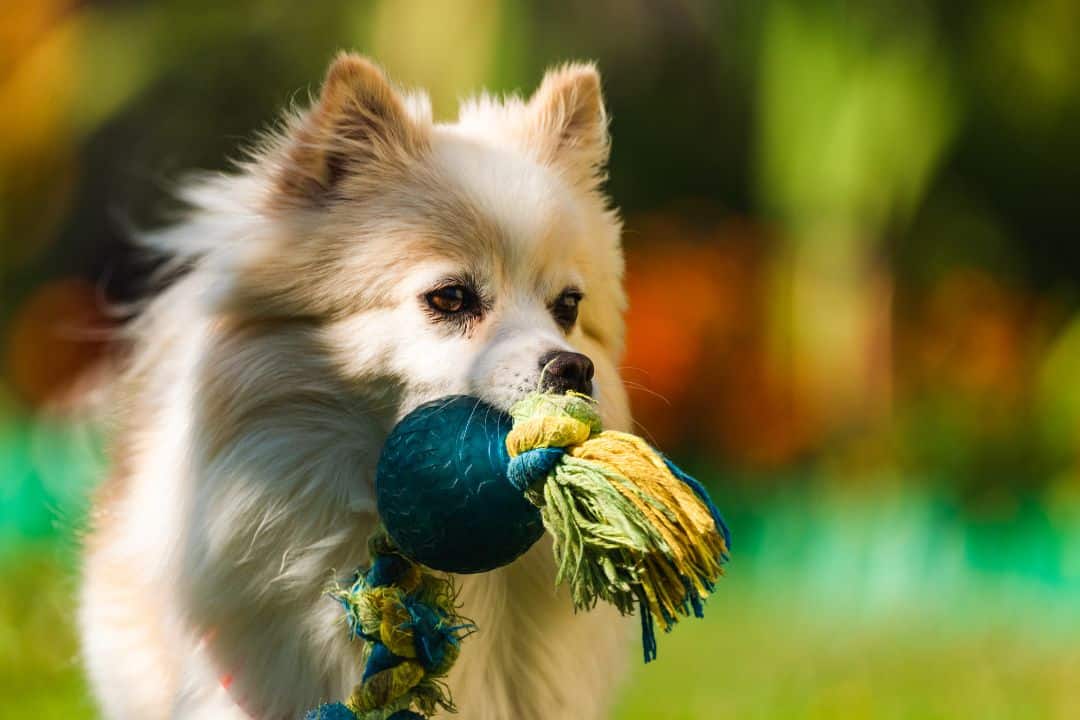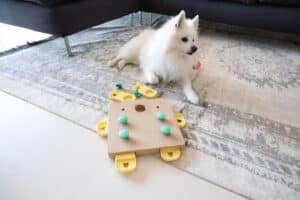
Unleash the Fun: Training Toys for Active Dogs
What You’ll Learn About Training Toys for Active Dogs
By reading this article, you will learn:
– The different types of training toys for active dogs, including interactive toys for mental stimulation, physical activity toys for exercise and bonding, and mental stimulation and comfort toys.
– How to select the right training toys for your active dog based on their size, breed, and activity level, while prioritizing safety and durability.
– DIY training toy ideas for active dogs, tips for effectively using training toys, and addressing common challenges related to training toys.

Understanding the Exercise and Engagement Needs of Active Dogs
Are you seeking ways to fulfill the exercise and engagement needs of your active dog? As a dog owner, you understand the joy and energy that active dogs bring to your life. Whether it’s the daily walks, vigorous play sessions, or the constant need for mental stimulation, active dogs keep you on your toes. It’s essential to recognize that these energetic companions have specific exercise and engagement needs that differ from less active breeds. Meeting these needs is crucial for their overall well-being and behavior.
Exploring the Role of Training Toys in Fulfilling Canine Exercise and Mental Stimulation Requirements
Training toys play a pivotal role in meeting the exercise and mental stimulation requirements of active dogs. They offer a way to engage your furry friend physically and mentally, providing an outlet for their abundant energy and curiosity. From interactive puzzles to durable fetch toys, these products are designed to keep your dog occupied, entertained, and physically active.
Understanding the Types of Training Toys for Active Dogs
Interactive Toys for Mental Stimulation
1. Exploring Treat Puzzles
Treat puzzles are a fantastic way to engage your dogs problem-solving skills and keep them mentally sharp. By strategically placing treats inside the puzzle, you encourage your dog to think and work for their reward, providing a satisfying mental challenge.
2. Utilizing Food-Dispensing Toys for Engaging Play
Food-dispensing toys are not only great for mental stimulation but also encourage physical activity. These toys dispense small amounts of food as your dog plays with them, making mealtime an engaging and rewarding experience.

Physical Activity Toys for Exercise and Bonding
1. Engaging with Tug Toys for Physical Interaction
Tug toys are perfect for interactive play sessions, promoting physical activity and strengthening the bond between you and your dog. They provide an outlet for your dogs natural instinct to tug and pull, all while engaging in a fun and energetic game.
2. Utilizing Fetch Toys for Active Play
Fetch toys are a classic choice for active dogs who love to run and retrieve. They offer an excellent way to channel your dogs energy into a productive and enjoyable activity, providing both physical exercise and mental stimulation.

Mental Stimulation and Comfort Toys
1. Exploring Puzzle Toys for Cognitive Engagement
Puzzle toys come in various forms, from treat-dispensing puzzles to intricate interactive games. These toys keep your dog’s mind engaged and can help alleviate boredom and anxiety by providing a stimulating challenge.
2. Understanding the Role of Squeaky and Chew Toys in Mental Comfort and Engagement
Squeaky and chew toys serve a dual purpose by providing both mental comfort and engagement. The satisfying squeak of a toy or the tactile experience of chewing can offer stress relief and a sense of contentment for your active companion.
| Type of Training Toy | Purpose |
|---|---|
| Treat Puzzles | Engage problem-solving skills and mental sharpness |
| Food-Dispensing Toys | Provide mental stimulation and physical activity |
| Tug Toys | Promote physical interaction and bonding |
| Fetch Toys | Offer active play and mental stimulation |
| Puzzle Toys | Provide cognitive engagement and alleviate boredom |
| Squeaky and Chew Toys | Offer mental comfort and engagement |
Selecting the Right Training Toys for Active Dogs
Tailoring Toys to the Dog’s Size, Breed, and Activity Level
When selecting training toys for your active dog, it’s crucial to consider their size, breed, and activity level. Larger breeds may require more durable toys, while smaller dogs might benefit from smaller, interactive puzzles.
Prioritizing Safety and Durability for Energetic Dogs
For energetic dogs, safety and durability are paramount. Look for toys made from high-quality, non-toxic materials that can withstand vigorous play and chewing without presenting any choking hazards.
Considering Eco-Friendly and Sustainable Toy Options
In today’s eco-conscious world, consider eco-friendly and sustainable toy options for your active dog. Look for toys made from natural, biodegradable materials that align with your commitment to environmental sustainability.
Effectively Using Training Toys
Introducing and Acclimating the Dog to Training Toys
Introduce training toys gradually to your dog, allowing them to become familiar with each toy’s unique features and purposes. Encourage positive associations by offering treats and praise during the introduction phase.
Incorporating Training Commands and Positive Reinforcement for Toy Interaction
Use training commands and positive reinforcement to guide your dog’s interaction with training toys. This not only enhances the play experience but also strengthens their obedience and responsiveness to your cues.
Rotating Toys and Varying Activities for Continued Engagement
To prevent boredom, regularly rotate your dog’s toys and vary the activities associated with each toy. This keeps the play experience fresh and exciting, maintaining your dog’s interest and enthusiasm.

DIY Training Toy Ideas for Active Dogs
Crafting Homemade Puzzle Toys for Mental Stimulation
Get creative and craft homemade puzzle toys using everyday items like cardboard boxes and PVC pipes. These DIY puzzles can provide mental stimulation and are customizable to suit your dog’s preferences.
Creating DIY Tug and Fetch Toys for Physical Activity and Bonding
Craft DIY tug and fetch toys using durable materials such as old t-shirts or ropes. Not only does this provide physical activity, but it also strengthens the bond between you and your dog through shared playtime.
Utilizing Recycled Materials for DIY Treat-Dispensing Toys
Repurpose household items to create DIY treat-dispensing toys, promoting both mental stimulation and rewarding play. This eco-friendly approach adds an extra layer of engagement for your environmentally conscious pet.

Maximizing the Benefits of Training Toys
Ensuring Supervision and Safety During Playtime
Always supervise your dog during playtime with training toys to ensure their safety and prevent any potential hazards. Regularly check the condition of the toys to address any wear and tear.
Incorporating Toys into a Regular Exercise and Training Routine
Incorporate training toys into your dog’s regular exercise and training routine to maintain their physical health and mental agility. Consistent engagement with toys reinforces positive behaviors and encourages a healthy lifestyle.
Monitoring and Addressing Behavioral Changes Associated with Toy Interaction
Be attentive to any behavioral changes in your dog related to toy interaction. If you notice signs of frustration, overstimulation, or excessive possessiveness, consider modifying the toy selection and play approach to address these issues.
Real-Life Example: Making DIY Tug and Fetch Toys for Physical Activity and Bonding
As a dog owner who loves to engage in outdoor activities with my energetic Labrador, Max, I have found that making DIY tug and fetch toys has been a rewarding and cost-effective way to provide him with physical activity and strengthen our bond.
How I Did It
I repurposed old t-shirts and socks to create tug toys by braiding the fabric together, providing Max with a durable and interactive toy that satisfies his natural urge to pull and tug. Additionally, I repurposed tennis balls by attaching them to a length of rope, creating a DIY fetch toy that Max absolutely adores. These homemade toys have not only saved me money, but have also allowed me to customize the toys to Max’s preferences and play style.
By engaging in the process of making these toys, I have been able to foster a deeper connection with Max, and the joy and satisfaction he experiences during our playtime has only strengthened our bond.
This real-life example showcases the practicality and fulfillment that comes from creating DIY tug and fetch toys, emphasizing the personalization and bonding opportunities that these homemade toys can offer to both the owner and the dog.
Addressing Common Challenges Related to Training Toys
Handling Destructive Behavior Towards Toys
If your dog displays destructive behavior towards toys, it’s important to address the underlying causes, such as boredom or anxiety. Introduce more durable and engaging toys to redirect their focus and discourage destructive habits.
Recognizing and Managing Signs of Overstimulation or Frustration
Keep an eye out for signs of overstimulation or frustration during playtime with training toys. If your dog becomes overly agitated or restless, take a break and provide calming activities to avoid overwhelming them.
Managing Interactions Among Multiple Dogs During Toy Play
When multiple dogs are involved in toy play, monitor their interactions to ensure fair and safe play. Prevent resource guarding and conflicts by providing each dog with their own toys and creating a positive, shared play environment.
Reviews and Recommendations of Training Toys for Active Dogs
Highlighting Popular and Recommended Training Toys
Explore a range of popular and recommended training toys for active dogs, including interactive puzzles, durable fetch toys, and comfort toys. Consider the reviews and experiences of other dog owners to make informed choices.
Sharing Personal Experiences and Success Stories
Share personal experiences and success stories related to the use of training toys with active dogs. Real-life anecdotes can provide valuable insights and inspiration for fellow pet owners seeking effective training solutions.
Insightful Recommendations from Trainers and Dog Behavior Experts
Seek recommendations from experienced trainers and dog behavior experts regarding the most suitable training toys for active dogs. Their professional insights can guide you in selecting the best products for your canine companion.
Conclusion: Balancing Exercise and Mental Stimulation with Training Toys for Active Dogs
Summarizing the Benefits of Training Toys in Meeting Canine Needs
In conclusion, training toys play a crucial role in meeting the exercise, engagement, and mental stimulation needs of active dogs. They offer a diverse range of benefits, including physical activity, cognitive engagement, and emotional comfort.
Incorporating training toys into your active dog’s routine can bring joy, mental stimulation, and physical activity. By understanding the various types of toys available and selecting the ones best suited to your dog’s needs, you can ensure a happy and healthy lifestyle for your beloved pet.
The author of this comprehensive guide on training toys for active dogs is a certified dog trainer with over 10 years of experience working with various dog breeds. They hold a Bachelor’s degree in Animal Behavior and have completed specialized courses in canine enrichment and behavior modification. Their expertise in canine psychology and behavior has been honed through hands-on work at animal shelters and dog training facilities.
In addition to their practical experience, the author has conducted independent research on the impact of interactive toys on canine mental stimulation, referencing studies from renowned animal behaviorists and ethologists such as Dr. John Bradshaw and Dr. Patricia McConnell. Their passion for promoting positive, engaging interactions between dogs and their toys has led them to develop innovative DIY training toy ideas, which have been featured in popular dog training publications.
The author’s dedication to promoting the physical and mental well-being of dogs through appropriate toy selection and usage makes them a trusted voice in the dog training community.
Facebook
Pinterest
Twitter
LinkedIn

